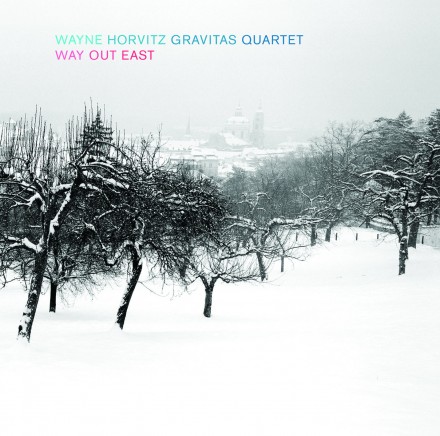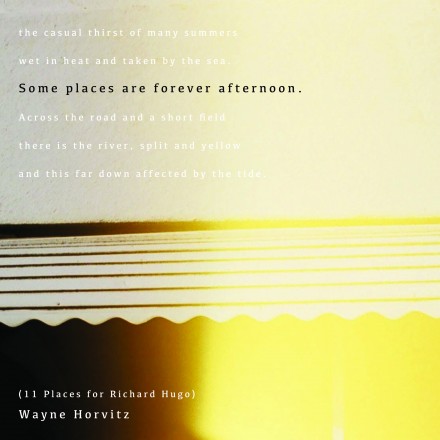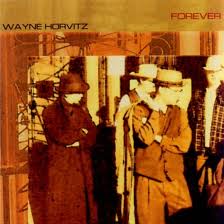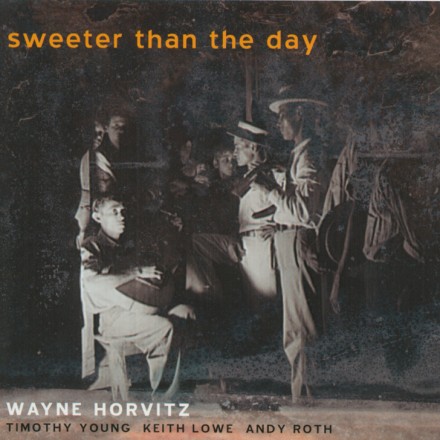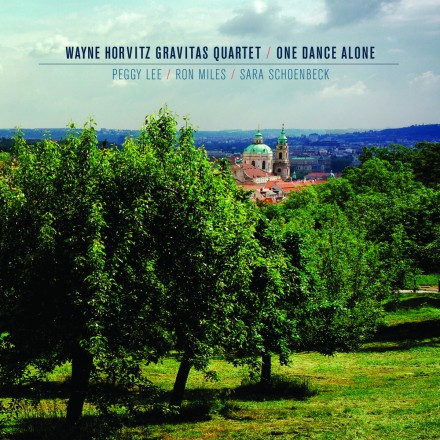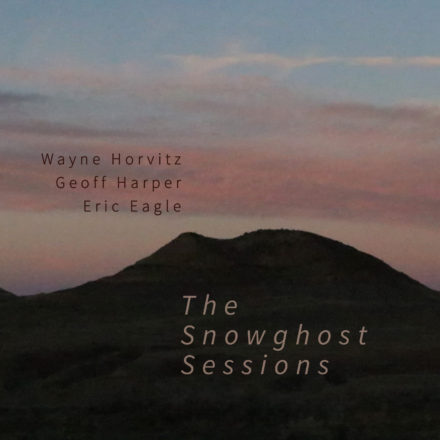Wayne Horvitz Gravitas Quartet
Way Out East
SGL SA1558-2“Horvitz’s opening piano improvisation is indistinguishable from his written work; both share the same balanced phrases, the same kind of motivic development and harmonic sophistication and the same sense of melodic inevitability, as if the music couldn’t have unfolded any other way.”
– Jazziz
The Gravitas Quartet is pianist Wayne Horvitz’s new improvising chamber ensemble. Its members are all highly distinctive voices on their instruments, the sound of the group is unique, and the playing is both classically poised and jazzily exuberant and inventive. What really makes the music shine though is Wayne’s gift as a composer, the way his themes and harmonies insinuate themselves into the listener’s consciousness and often touch you in those vulnerable places with their tart nostalgia and bittersweet melancholy.
You can hear the long history of jazz in some of these pieces; others seem to break free from genre expectations altogether. Since the late 1980s Wayne has been composing for various classical music ensembles – string orchestra, string quartet (heard on his new Tzadik CD Whispers, Hymns and a Murmur), and various other chamber groups, sometimes with electronics and/or improvising soloists such as Bill Frisell, Eyvind Kang or Peggy Lee. The Gravitas Quartet splits the difference between this work and jazzier writing for groups such as Sweeter Than the Day: “This group really came out of my desire to find a context for the way I’ve been developing my piano playing in the last five years…. When I have a new project I often have a lot of ideas at once so I jot them down quickly and then go back and work them through. Sometimes it’s as simple as ‘I need to write a piece that features Peggy’ so clearly my language is inspired partly by her playing. “L.B.” started out when I was fooling around with a harmonic device in a song from West Side Story (hence the title) – but once it developed I doubt most people would notice it. A lot of the structures are similar to ones I might use with the Four plus One Ensemble or even my group with Butch Morris and Bobby Previte from the late 80s. That being said, the actual written material, at least in some cases, is really notated as if I was writing for a classical ensemble, both in terms of the content and compositional technique. They’re really miniatures with places for improvisation.”
On two pieces (“World Peace and Quiet” and the improvised group composition “Reveille”) synthesizer replaces piano, and on another improvisation, the ambient-ish “Between Here and Heaven,” Wayne plays both. What are the considerations around combining electronics and piano? “I’ve been using this combination since my first CD on Soul Note – some order, long understood with Butch Morris and William Parker. A lot of my early experimentation with electronics was processing amplified piano, and to be frank I got tired of getting under the piano in dirty lofts in NYC and attaching the pick-ups. Later, with the Four plus One Ensemble, Tucker Martine would mike the piano and process it, which was fantastic. I often play electronics without much reference to my piano technique … however I think electronics sometimes do inform my piano playing – certain sonic spaces I try to create at the piano.”
Way Out East was recorded and mixed in DSD, bringing out the beauty of its textures and sonorities. The multi-channel mix subtly enhances the spatial qualities in the music and the interplay of melodic lines and rhythms.
The Gravitas Quartet is a long-term priority for Wayne. Given its members’ deep experience of new music, jazz and improvisation, and the ensemble fluidity of their work together here, they are already at the forefront of groups that are redrawing the landscape of contemporary music.
“…a perfectly balanced project of deeply felt chamber jazz…With both exquisite composition and passionate improvisation, this is one of the finest works of 2006…Perhaps it doesn’t fuse or span genres as much as it defies them, proving again that great art becomes its own category. Mainly I know this: I want to hear this music again and again, and each time it glides amidst a different set of complex human feelings. It’s soothing and disturbing in varying degrees, and it seems to make my heart and my brain happy. Whatever kind of music fan you may be, you should consider making room for this adventurous statement from a great American composer.” – Will Layman, Popmatters.com
